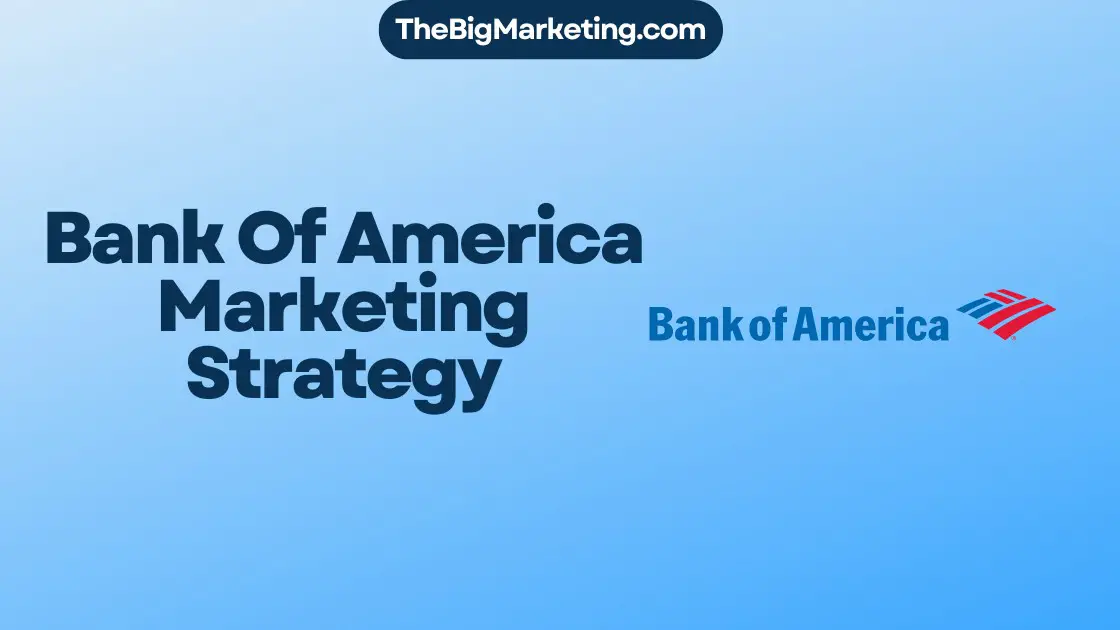Digital marketing and UX design are two essential components of creating successful online experiences. While they have distinct focuses, they work together in enhancing user satisfaction, driving engagement, and achieving business goals. Understanding the difference and synergy between digital marketing and UX design is crucial for businesses aiming to optimize their online strategies.
Digital marketing involves promoting products and services through various online channels, such as social media, search engines, email marketing, and content creation. On the other hand, UX design focuses on creating user-friendly interfaces and experiences by prioritizing user satisfaction and usability.
The role of UX design in digital marketing is instrumental. By shaping how users interact with digital platforms, UX design influences user engagement, conversion funnels, and brand loyalty. A well-designed user experience guides users seamlessly through the sales funnel, reducing bounce rates and increasing the likelihood of conversions.
Conversely, digital marketing plays a vital role in UX design. It increases brand visibility, generates leads, and enhances customer relationships. Through digital marketing strategies such as social media marketing, content marketing, and targeted advertising, businesses can reach a wider audience and gather valuable data and insights to inform UX design decisions.
Integrating digital marketing strategies into UX design processes can lead to exceptional user experiences. Strategies like social media marketing, content marketing, SEO, and targeted advertising can be leveraged to align user experiences with marketing goals. This approach improves user satisfaction and usability, ultimately driving engagement and business growth.
The impact of UX design on digital marketing is undeniable. By improving user engagement and reducing bounce rates, UX design enhances the overall effectiveness of digital marketing efforts. A user-centric design approach ensures that digital content effectively resonates with user preferences, positively influencing the brand’s SEO performance.
Improving digital marketing with UX design requires a user-centered design approach that focuses on usability, functionality, and user satisfaction. By eliminating friction points in the user journey, UX design enhances the user experience, making it easier for users to find what they’re looking for and accomplish their goals.
The benefits of UX design in digital marketing are wide-ranging. It builds trust and credibility, differentiates brands from competitors, improves conversion rates, ensures mobile responsiveness, and enhances SEO performance. Investing in UX design allows businesses to create exceptional user experiences that contribute to the success of their digital marketing strategies.
Key Takeaways:
- Digital marketing and UX design work together to enhance user satisfaction and drive engagement.
- Digital marketing focuses on promoting products and services through online channels, while UX design prioritizes user-friendly interfaces.
- UX design plays a crucial role in digital marketing by improving user engagement, conversion funnels, and brand loyalty.
- Digital marketing plays a vital role in UX design by increasing brand visibility, generating leads, and enhancing customer relationships.
- Integrating digital marketing strategies into UX design processes can lead to exceptional user experiences and drive business growth.
Understanding Digital Marketing and UX Design
Digital marketing strategically utilizes online channels and techniques to promote products and engage with a target audience. It encompasses various strategies, including social media marketing, search engine optimization (SEO), email marketing, and content marketing. On the other hand, UX design focuses on creating user-friendly interfaces and seamless experiences that prioritize user satisfaction and usability.
In digital marketing, businesses leverage online channels such as websites, social media platforms, and advertising networks to reach their target audience effectively. By utilizing social media marketing, businesses can engage with their audience on platforms like Facebook, Instagram, and LinkedIn. They can create targeted campaigns, share relevant content, and interact with users to promote their products or services.
SEO plays a crucial role in digital marketing by optimizing websites to rank higher in search engine results pages (SERPs). By implementing SEO strategies like keyword research, on-page optimization, and link building, businesses can improve their visibility in search engines like Google. This increased visibility drives organic traffic and enhances the chances of attracting potential customers.
Email marketing is another important aspect of digital marketing. By building an email list of potential customers, businesses can send targeted and personalized emails to nurture leads, promote new products or services, and build customer relationships. Email marketing aids in driving conversions and establishing customer loyalty.
Content marketing focuses on creating and distributing valuable and relevant content to attract and retain a target audience. By producing informative blog posts, videos, infographics, and other forms of content, businesses establish themselves as industry experts and build trust with their audience. Content marketing helps generate leads, increase brand awareness, and drive conversions.
On the other side, UX design plays a significant role in creating seamless and user-friendly experiences across various digital platforms. UX designers prioritize understanding user needs, behaviors, and preferences to design intuitive interfaces and smooth user journeys. By conducting user research, creating wireframes and prototypes, and performing usability testing, UX designers ensure that the final digital product meets user expectations and enhances user satisfaction.
The goal of UX design is to make the user’s interaction with the digital product as effortless and enjoyable as possible. It involves designing user interfaces that are easy to navigate, visually appealing, and responsive across different devices. UX designers consider factors such as color schemes, typography, layout, and interaction patterns to create an aesthetically pleasing and functional design.
Through UX design, businesses can improve user satisfaction, reduce friction points in the user journey, and increase user engagement. By analyzing user behavior, feedback, and data, UX designers can make data-driven decisions to optimize the user experience and align it with business goals.
| Digital Marketing | UX Design |
|---|---|
| Promotes products and engages with the target audience through online channels | Creates user-friendly interfaces and seamless experiences to enhance user satisfaction |
| Utilizes social media marketing, SEO, email marketing, and content marketing | Focuses on user research, wireframing, prototyping, and usability testing |
| Drives traffic, conversions, and brand awareness | Improves user satisfaction, usability, and user engagement |
The Synergy Between Digital Marketing and UX Design
Digital marketing and UX design share a synergistic relationship where they work together to create impactful and user-centric online experiences. By leveraging digital marketing strategies, such as targeted advertising and content marketing, businesses can drive traffic and conversions to their websites or apps. UX design, on the other hand, enhances these efforts by ensuring that users have a seamless and satisfying experience interacting with the digital product. A well-designed user experience aligns with marketing goals, keeps users engaged, guides them through conversion funnels, and fosters brand loyalty.
To understand the synergy between digital marketing and UX design, let’s take a closer look at how these two disciplines complement each other:
The Role of Digital Marketing
Digital marketing plays a crucial role in promoting businesses and attracting potential customers. Through targeted advertising and content marketing, businesses can reach their desired audience and generate awareness about their products or services. Digital marketing strategies such as search engine optimization (SEO) help improve online visibility and drive organic traffic to websites. Overall, digital marketing serves as the foundation for businesses to establish their online presence and connect with their target market.
The Importance of UX Design
While digital marketing brings users to the digital product, UX design focuses on providing users with a seamless and satisfying experience. UX designers strive to understand user behaviors, needs, and preferences in order to create intuitive and user-friendly interfaces. By employing user-centered design principles, UX designers ensure that every interaction a user has with a digital product is delightful and efficient. UX design empowers businesses to optimize the user journey, improve user satisfaction, and increase brand loyalty.
| Digital Marketing | UX Design |
|---|---|
| Drives traffic and conversions | Enhances the user experience |
| Targets specific audience segments | Understands user behaviors and preferences |
| Builds brand awareness | Creates intuitive and user-friendly interfaces |
| Increases online visibility | Optimizes the user journey |
The table above illustrates the key roles of each discipline and emphasizes the core ways in which digital marketing and UX design work together to deliver exceptional online experiences.
Ultimately, the synergy between digital marketing and UX design is crucial for businesses aiming to create user-centric online experiences. By applying digital marketing strategies alongside UX design principles, businesses can attract and engage users, leading to increased user satisfaction, improved brand loyalty, and ultimately, business success.
The Role of UX Design in Digital Marketing
UX design plays a crucial role in digital marketing by shaping how users interact with digital platforms and influencing their perceptions of a brand. A well-designed website or app with intuitive navigation, visually appealing layouts, and easy-to-understand interfaces can significantly improve user engagement. It reduces bounce rates, increases the likelihood of conversions, and fosters brand loyalty. UX design ensures that users have a positive and seamless journey through the sales funnel, making it easier for them to complete desired actions, such as making a purchase or filling out a form.
The success of digital marketing campaigns relies on user engagement and conversion funnels. With effective UX design, businesses can create digital experiences that captivate users and guide them through the conversion process effortlessly. By understanding user behaviors, preferences, and motivations, UX designers can optimize the layout, content, and functionality of digital platforms to enhance the overall user experience.
Enhancing User Engagement
A well-designed user interface and intuitive user experience can significantly improve user engagement. When users find it easy to navigate through a website or app, locate relevant information, and perform desired actions, they are more likely to stay on the platform and explore further. A visually appealing design combined with seamless interactions creates a positive impression and keeps users engaged.
Improved Conversion Funnels
The design of the user interface and the layout of a digital platform can have a substantial impact on conversion rates. A cluttered interface or confusing navigation can cause users to abandon the conversion funnel and leave without completing their desired actions. On the other hand, a well-designed interface that guides users through the conversion process can increase the likelihood of conversions. By optimizing the user experience, businesses can streamline the conversion funnels and improve overall conversion rates.
Fostering Brand Loyalty
A positive user experience contributes to brand loyalty. When users have a seamless and enjoyable experience interacting with a brand’s digital platforms, they are more likely to develop a sense of trust and loyalty. They will return to the platform for future interactions and engage with the brand on multiple touchpoints. By consistently delivering exceptional user experiences, businesses can foster brand loyalty and turn customers into brand advocates.
| Benefits of UX Design in Digital Marketing |
|---|
| Improved user engagement |
| Reduced bounce rates |
| Increased conversion rates |
| Enhanced brand loyalty |
The Importance of Digital Marketing in UX Design
Digital marketing plays a vital role in UX design by increasing brand visibility, generating leads, and enhancing customer relationships. Through digital marketing strategies like social media marketing and content marketing, businesses can reach a wider audience and attract potential users to their digital products. This increased visibility and user engagement provide valuable data and insights that inform UX design decisions. Digital marketing also helps align UX design goals with overall business objectives, ensuring that the user experience contributes to achieving business growth and success.
By implementing effective digital marketing campaigns, businesses can enhance brand visibility, making their products and services more discoverable to potential users. This increased visibility not only drives traffic to digital platforms but also creates opportunities for user engagement and conversions. Digital marketing helps create brand awareness, establishing a strong presence in the digital landscape and generating interest in what the brand has to offer.
In addition to brand visibility, digital marketing strategies contribute to lead generation in UX design. By leveraging techniques such as email marketing and lead capture forms, businesses can capture user information and nurture potential leads. These leads can then be utilized to personalize the user experience, tailoring content and offerings to specific customer preferences. This targeted approach increases the chances of conversion and builds strong customer relationships.
Furthermore, digital marketing enables businesses to gather valuable data and insights that inform UX design decisions. By analyzing user behavior, preferences, and engagement patterns, UX designers can optimize the design of digital products, ensuring they meet user needs and expectations. Digital marketing metrics such as website traffic, click-through rates, and conversion rates provide quantitative data that can guide UX design improvements and enhancements.
Lastly, digital marketing helps align UX design goals with overall business objectives. By integrating digital marketing strategies into the UX design process, businesses can ensure that the user experience contributes to the achievement of business goals, such as increased sales, customer satisfaction, and brand loyalty. A well-designed user experience strengthens the brand’s position in the market, differentiating it from competitors and fostering customer loyalty.
Overall, the importance of digital marketing in UX design cannot be overstated. It enhances brand visibility, generates leads, provides valuable insights, and aligns UX design goals with overall business objectives. By incorporating effective digital marketing strategies into the UX design process, businesses can create user-centric experiences that drive engagement, conversions, and long-term success.
| Benefits of Digital Marketing in UX Design | How it Contributes to UX Design |
|---|---|
| Increased brand visibility | Attracts a wider audience and drives traffic to digital platforms |
| Lead generation | Collects user information and nurtures potential leads for personalized user experiences |
| Data and insights | Provides valuable data on user behavior, preferences, and engagement patterns for informed UX design decisions |
| Alignment with business objectives | Ensures that the user experience supports overall business goals and contributes to growth and success |
Digital Marketing Strategies for UX Design
Digital marketing offers a range of effective strategies that UX designers can utilize to enhance the user experience and drive business growth. By incorporating these strategies into the UX design process, designers can create user-centric experiences that align with marketing goals.
Social Media Marketing
Social media marketing is a powerful tool that allows designers to engage with potential users through targeted messaging. By leveraging social media platforms, designers can reach the right audience at the right time, delivering personalized content and driving user engagement.
Content Marketing
Content marketing plays a crucial role in guiding users through their journey and providing them with valuable information and resources. By creating high-quality and relevant content, designers can establish credibility, build trust, and educate users about their products or services.
SEO (Search Engine Optimization)
SEO is essential for ensuring that digital products are easily discoverable by search engines. Implementing SEO best practices, such as keyword research and optimization, can improve the visibility and ranking of websites or apps, increasing their chances of attracting organic traffic.
Targeted Advertising
Targeted advertising allows designers to reach specific user segments and create personalized experiences. By tailoring advertisements to individual user preferences and demographics, designers can enhance user engagement, increase conversions, and maximize the effectiveness of marketing campaigns.
By utilizing these digital marketing strategies, UX designers can optimize the user experience, improve user satisfaction, and drive business growth. The synergy between digital marketing and UX design enables the creation of compelling and user-centric digital experiences that resonate with users and achieve marketing objectives.
The Impact of UX Design on Digital Marketing
UX design plays a crucial role in digital marketing by directly influencing user engagement, bounce rates, and SEO performance. When digital products are designed with a strong focus on user experience, it leads to improved engagement and encourages users to stay longer, explore more content, and take desired actions.
A well-executed UX design creates a seamless and intuitive user journey, guiding users through the digital marketing funnel with ease. By reducing bounce rates and keeping users engaged, the overall effectiveness of digital marketing strategies is significantly enhanced.
One of the key benefits of UX design in digital marketing is its impact on SEO performance. Search engines analyze user engagement metrics, such as time spent on page, click-through rates, and conversion rates, to determine the relevance and quality of a website. A positive user experience, influenced by UX design, sends signals of user satisfaction to search engines, potentially resulting in higher rankings and improved organic search visibility.
Furthermore, UX design plays a pivotal role in guiding content placement and presentation. It ensures that the content effectively communicates with users, aligning with their preferences and resonating with their needs. Well-structured and visually appealing content placement not only enhances user experience but also contributes to higher engagement and increased conversions.

By prioritizing user-centered design principles, UX design empowers digital marketers to create user experiences that are tailored to their target audience’s needs and preferences. This results in improved user engagement, reduced bounce rates, and enhanced SEO performance, ultimately driving the success of digital marketing efforts.
Improving Digital Marketing with UX Design
UX design plays a critical role in improving the effectiveness of digital marketing strategies by focusing on user-centered design principles. By understanding user needs, behaviors, and preferences, UX designers can create interfaces that are intuitive, easy to use, and aligned with user expectations.
A user-centered design approach improves the overall usability, functionality, and user satisfaction of digital products, leading to better engagement and conversions. By identifying and eliminating friction points in the user journey, UX design ensures that users can easily find what they’re looking for and accomplish their goals without hassle.
When digital marketing efforts are enhanced with UX design principles and techniques, the result is exceptional user experiences that drive business growth. By creating interfaces that prioritize user satisfaction, digital marketers can deliver impactful campaigns that resonate with their target audience and yield better results.
Let’s take a look at how UX design improves key aspects of digital marketing:
User-Centered Design
UX design focuses on understanding the needs and preferences of users, creating interfaces that are tailored to their expectations. This user-centered approach ensures that digital marketing campaigns resonate with the target audience and effectively communicate the brand message. By crafting designs that prioritize user satisfaction, digital marketers can drive engagement and build lasting relationships with their customers.
Usability and Functionality
Through UX design, digital marketers can optimize the usability and functionality of digital platforms. By creating intuitive navigation, clear call-to-action buttons, and streamlined user flows, UX designers make it easy for users to find what they’re looking for and accomplish their goals. This improved usability reduces bounce rates, increases time spent on a website or app, and ultimately improves overall engagement and conversions.
User Satisfaction
UX design aims to create positive and satisfying user experiences by understanding user preferences and providing seamless interactions. By prioritizing user satisfaction in the design process, digital marketers can foster brand loyalty and encourage repeat visits. A satisfied user is more likely to engage with the brand’s digital marketing efforts, share positive reviews, and become an advocate for the brand.
Overall, UX design plays a vital role in improving the effectiveness of digital marketing by enhancing user-centered design, usability, functionality, and user satisfaction. When digital marketers collaborate with UX designers, they can create exceptional user experiences that drive engagement, increase conversions, and ultimately contribute to business success.
The Benefits of UX Design in Digital Marketing
UX design offers a multitude of benefits that can significantly enhance digital marketing efforts. By prioritizing user satisfaction and intuitive experiences, businesses can achieve higher levels of trust, brand differentiation, conversion rates, mobile responsiveness, and SEO performance.
1. Building Trust and Credibility
A well-designed user experience builds trust and credibility with users. When websites and applications are intuitive, easy to navigate, and visually appealing, users are more likely to engage with the brand, increasing their trust in the products or services being offered.
2. Brand Differentiation
UX design provides a competitive edge by differentiating a brand from its competitors. By delivering superior user experiences that are intuitive, enjoyable, and meet users’ needs, businesses can set themselves apart and create a distinct brand identity.
3. Improving Conversion Rates
Effective UX design guides users through the sales funnel and eliminates friction points, ultimately improving conversion rates. When the user journey is seamless and intuitive, users are more likely to complete desired actions, such as making a purchase, filling out a form, or subscribing to a newsletter.
4. Ensuring Mobile Responsiveness
With the increasing use of mobile devices, UX design plays a crucial role in ensuring mobile responsiveness. By designing interfaces and experiences that adapt to different screen sizes and resolutions, brands can reach a wider audience and provide a consistent user experience across devices.
5. Enhancing SEO Performance
The positive user experience resulting from UX design initiatives directly impacts SEO performance. Search engines consider user behavior, such as time on site, bounce rates, and click-through rates, as ranking factors. By creating intuitive and engaging user experiences, businesses can improve their SEO rankings and visibility in search engine results.
| UX Design Benefits | |
|---|---|
| Trust and Credibility | Builds trust and credibility with users |
| Brand Differentiation | Sets the brand apart from competitors |
| Conversion Rates | Improves conversion rates through seamless user journeys |
| Mobile Responsiveness | Ensures a consistent experience across devices |
| SEO Performance | Enhances SEO rankings through positive user experiences |
Conclusion
Digital marketing and UX design are pivotal in creating successful and user-centric online experiences. While digital marketing aims to drive engagement and conversions, UX design focuses on ensuring users have a positive and seamless interaction with digital products. These two disciplines work synergistically to enhance brand visibility, improve user satisfaction, guide users through the conversion process, and ultimately contribute to business growth and success.
By understanding the role and importance of both digital marketing and UX design, businesses can optimize their online strategies and deliver maximum impact to their target audience. Digital marketing strategies such as social media marketing, content marketing, and targeted advertising can be aligned with UX design principles to create user experiences that are not only visually appealing but also intuitive and user-friendly.
Through this synergistic relationship, businesses can provide user-centric online experiences that foster brand loyalty, increase user engagement, and ultimately drive business growth. By investing in digital marketing and UX design, businesses can cultivate a strong online presence, build trust with users, and differentiate themselves from competitors. The collaboration between digital marketing and UX design paves the way for businesses to deliver exceptional experiences that meet user needs and contribute to long-term success.
FAQ
What is the difference between Digital Marketing and UX Design?
Digital marketing focuses on promoting products and services through online channels, while UX design prioritizes creating user-friendly interfaces and experiences.
How do Digital Marketing and UX Design work together?
Digital marketing and UX design work together to enhance user satisfaction, drive engagement, and achieve business goals by creating impactful and user-centric online experiences.
What is the role of UX Design in Digital Marketing?
UX design plays a crucial role in digital marketing by shaping how users interact with digital platforms, improving user engagement, and influencing user perceptions of a brand.
Why is Digital Marketing important in UX Design?
Digital marketing is important in UX design as it increases brand visibility, generates leads, and provides valuable data to inform UX design decisions, ensuring that the user experience aligns with marketing goals.
What are some Digital Marketing strategies for UX Design?
Some digital marketing strategies for UX design include social media marketing, content marketing, search engine optimization (SEO), and targeted advertising.
How does UX Design impact Digital Marketing?
UX design impacts digital marketing by improving user engagement, reducing bounce rates, and enhancing SEO performance, resulting in more effective digital marketing efforts.
How can UX Design improve Digital Marketing?
UX design improves digital marketing by incorporating user-centered design principles, enhancing usability, functionality, and user satisfaction, leading to better engagement and conversions.
What are the benefits of UX Design in Digital Marketing?
The benefits of UX design in digital marketing include building trust and credibility, differentiating a brand from competitors, improving conversion rates, ensuring mobile responsiveness, and enhancing SEO performance.
How do Digital Marketing and UX Design create user-centric online experiences?
Digital marketing and UX design work together synergistically to create user-centric online experiences by focusing on user satisfaction, driving engagement, and fostering brand loyalty.








